Deciphering the World’s Oldest Symbols
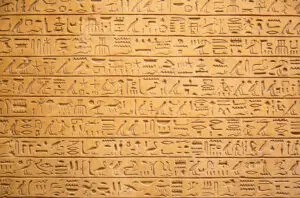
Updated On: April 04, 2024 by Raghda Elsabbagh
Exploring the ancient marks left by our ancestors reveals a world steeped in mystery and ingenuity. These primal etchings, often found on the walls of caves or on fragments of bone and stone, are the world’s oldest known symbols. They are a testament to the early human ability to communicate and record experiences. As we examine these powerful remnants of the past, we’re not just tracing the lines and shapes themselves; we’re uncovering the origins of graphic communication and the cognitive leaps that have propelled humanity forward.
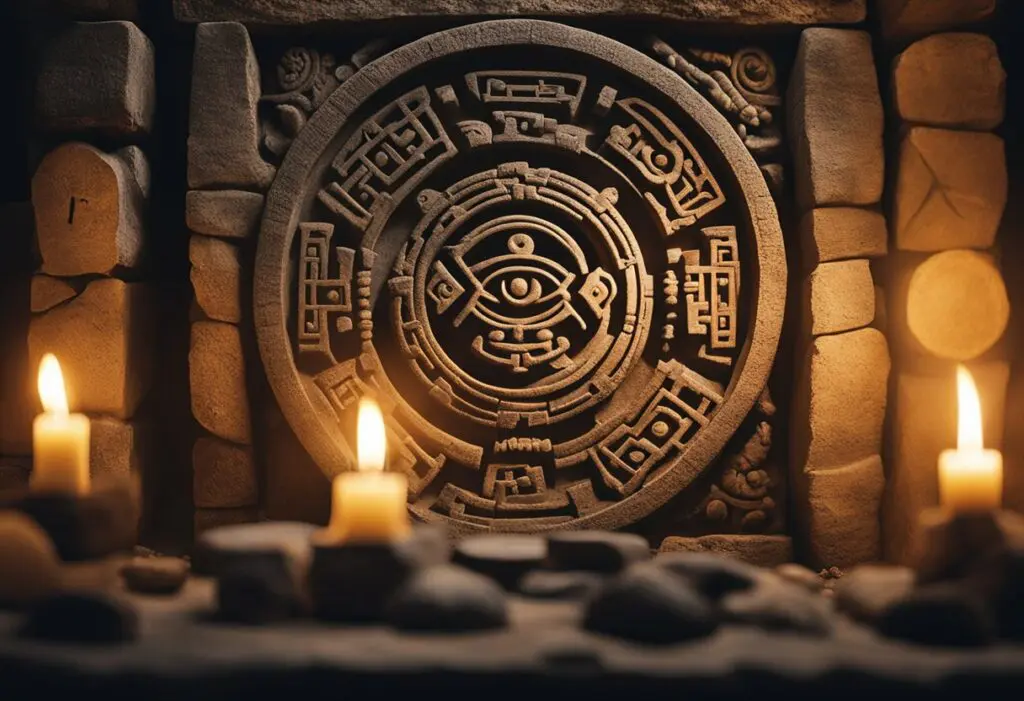
Our quest to understand these ancestral signs takes us across the globe, from the depths of European caves to the far reaches of Asia and Africa, highlighting a shared language of symbolism that transcended geographical boundaries. The study of these symbols is multifaceted; it involves the rigorous application of archaeological techniques and analyses while also considering the cultural significance of these shared symbols. Figuring out how these symbols connected communities and conveyed shared meanings is a challenge that has captured the imaginations of researchers like Genevieve von Petzinger, who pioneered a systematic study of these ancient marks.
Table of Contents
The Dawn of Symbolism
As we explore the origins of human communication, we find the roots of symbolism deeply embedded in ancient cave art. From intricate patterns to figurative representations, these relics offer a glimpse into the cognitive leap that early humans made in Africa during the Ice Age.
Defining the World’s Oldest Symbols
The term ‘oldest symbols’ refers to the archaic markings that early humans created, some of which can be traced back over 40,000 years. These are not merely random scratches; they constitute the earliest form of graphic communication. A set of 32 symbols repeatedly appears across a wide geographic span, signifying a shared symbolic language used by Ice Age communities. This discovery reveals an unprecedented level of creativity and symbolic meaning that was once thought to be beyond the capabilities of our ancestors.
Early Humans and Symbolic Expression
We now understand that the capacity for symbolic expression was not confined to a single region but was a widespread feature among early humans across Africa and beyond. These expressions, found in the depths of caves or on the surfaces of ancient tools, span a timeline that predates the arrival of modern humans in Europe. The art forms range from simple geometric designs to more complex depictions, indicating a cognitive sophistication that formed the bedrock of our cultural evolution. These symbols attest to the fact that early humans possessed not only recognition of the natural world around them but also an impulse to imbue it with symbolic meaning.
Genevieve Von Petzinger’s Pioneering Work
Genevieve von Petzinger’s work has significantly advanced our understanding of prehistoric communication. Her dedication to uncovering the meaning behind ancient symbols has provided invaluable insights into the cognitive abilities of early humans.
Deciphering Prehistoric Signs
Von Petzinger, a Canadian archaeologist, embarked on a quest to decode the 32 signs that recur in Ice Age rock art across Europe. She meticulously catalogued these signs, creating a comprehensive database that enabled her to analyse patterns and establish connections. With a hypothesis that these signs could be the earliest forms of graphical communication among humans, von Petzinger’s analysis directs our attention to a prehistoric system of symbolic expression.
The First Signs Publication
Drawing from her extensive research, von Petzinger authored the publication “The First Signs: Unlocking the Mysteries of the World’s Oldest Symbols“. This book sheds light on the significance of the 32 signs from Ice Age archaeological sites, offering hypotheses about their potential meanings and functions. Additionally, von Petzinger has shared her intriguing findings with a wider audience through her TED Talk, propelling public interest and academic dialogue on early symbolic systems.
Geographic Distribution of Ancient Symbols
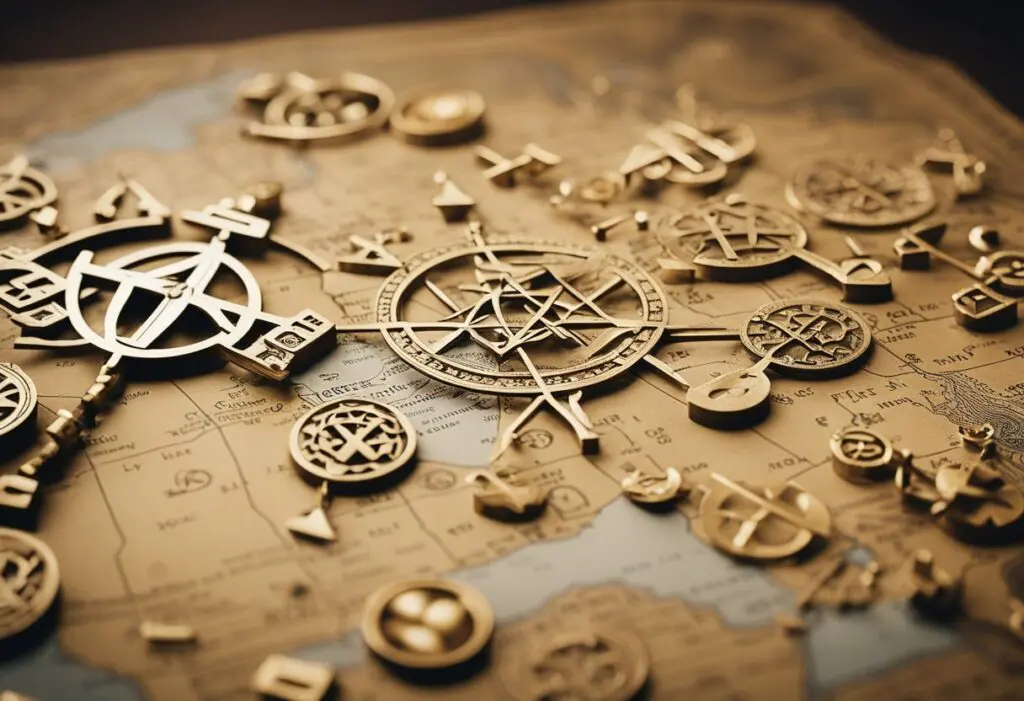
In our exploration of the world’s oldest symbols, we trace their geographic spread, noting particularly dense clusters of Ice Age art in Europe and remarkable expressions of early symbolism found across a wider global landscape.
Ice Age Art across Europe
Europe stands as a venerable gallery of prehistoric creativity, with an astonishing variety of symbols adorning its ancient walls. The Balkans region, for instance, is a significant repository of early art, as it presents some of the earliest known depictions—a canvas of human experience from millennia past. Ice age cave art, displaying a commonality in symbols despite vast distances between sites, suggests a shared cognitive framework or communication system amongst our ancestors. In Spain, intricate etchings and paintings of animals like the Bison and Deer point to a symbolic discourse that may have been pivotal for cultural and survival purposes.
Cave Art Sites Beyond the European Continent
Branching out from Europe, the discovery of ancient symbols is not confined to a single continent. Glimpses of similar markings appear in disparate regions beyond, indicating a complex network of symbolic expression shared among early human communities. This widespread distribution underlines the significance and perhaps the necessity of symbols as a means for communication and cultural continuity across ancient humankind.
Archaeological Techniques and Analyses
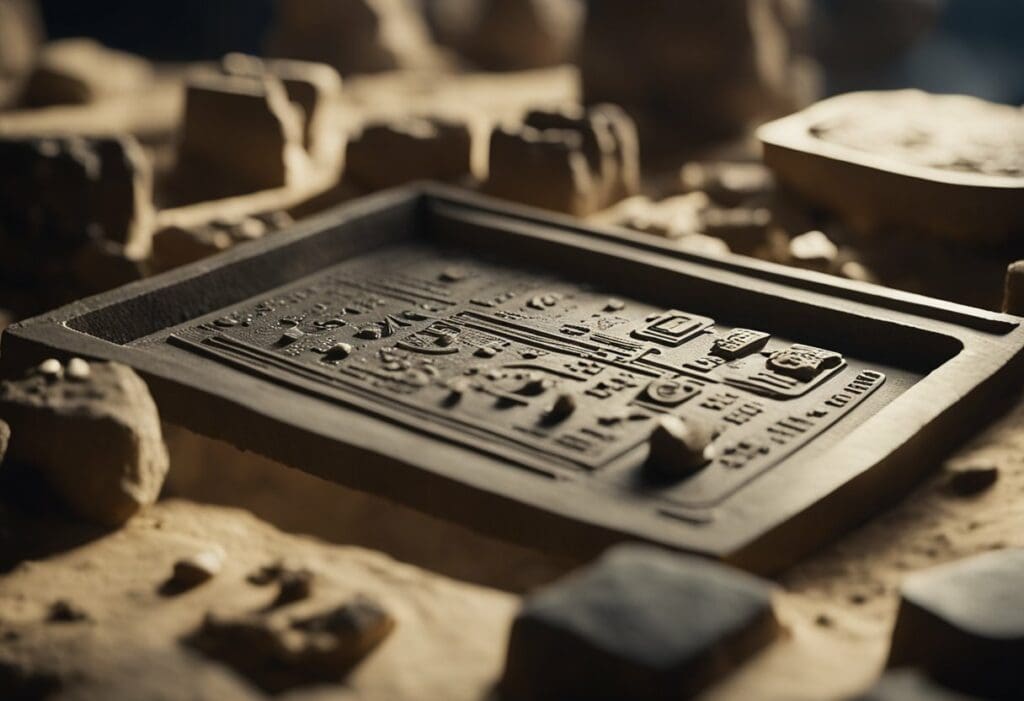
In exploring the oldest symbols, our examination is rooted in the precise techniques and advanced technologies that archaeologists employ at rock art and cave sites.
Unravelling Symbolic Patterns
We meticulously document the location and context of rock art to identify recurring patterns. Through detailed fieldwork, archaeologists can determine these symbols’ cultural significance and chronology. By cataloguing variations in designs, we ascertain the development of symbolic language over time.
Advanced Technology in Archaeology
Our approach utilises cutting-edge technology to explore inaccessible areas, like employing an underwater robot for submerged sites. Advanced tools, such as 3D modelling and digital imaging, enable us to analyse rock art without impacting the site, preserving these ancient markings for future generations.
Cognitive Evolution and Graphic Communication

In the grand narrative of our species, the leap in cognitive capabilities is deeply intertwined with the advent of graphic communication. This section looks closely at how humans developed the intellectual prowess necessary to create graphic symbols and the progression from these early signs to complex writing systems.
Development of Human Brains
Human brains evolved remarkably, enabling us to perceive, interpret, and convey complex concepts. Our ancestors, Homo sapiens, exhibited a significant increase in brain size and complexity, especially in regions responsible for language and thought. This neural expansion facilitated a proficiency for abstract thinking – a prerequisite for the creation of geometric signs and, by extension, graphic communication.
From Signs to Writing Systems
The transition from utilising simple signs to the development of full-fledged writing systems marks a pivotal chapter in our history. Geometric signs provided a foundation, illustrating the capability of our ancestors to imbue static figures with meaning. Over millennia, these representations became more sophisticated, contributing to the history of language and culminating in the written language systems that shaped civilisations.
Interpreting Art and Artefacts
In this exploration, we unveil the significance of depictions and symbolic items crafted by early humans, offering insights into their lives and values.
The Role of Animals in Ice Age Art
Ice Age art is renowned for its animal depictions, with species such as mammoths often captured in striking detail. We find that these creatures were not only vital to the survival of Ice Age people but also held a deeper, perhaps spiritual significance. For instance, the use of ochre suggests a ritualistic aspect, possibly indicating a clan sign or a form of early storytelling through personal narrative.
Symbolic Objects and Jewellery
Moving beyond mere survival, Ice Age artists crafted objects imbued with meaning. Take, for example, a mysterious necklace, each bead potentially signifying an event or a rite of passage. Such artefacts offer us a glimpse into the social structure and cultural importance of adornment, where jewellery might serve as a symbol of one’s status or role within the clan.
Cultural Significance and Shared Symbols
The rich tapestry of human history is interwoven with symbols that transcend time and geography. Our understanding of these marks provides a window into the cultures of our ancestors and the shared elements that define human communication.
Symbols as a Means of Communication
Symbols have served as a foundational tool for communication since time immemorial. Early human societies used symbols to convey complex ideas and messages. These symbols, ranging from simple geometric patterns to intricate representations of the world around them, allowed communities to record their experiences and share knowledge. Trading signs often facilitated the exchange of goods by representing commodities, values, or even terms of trade, streamlining interactions between disparate groups.
Patterns of Cultural Exchange
The exchange of signs and symbols between cultures can trace the pathways of ancient interactions and influence. With each instance of trading or sharing symbols, snippets of culture intertwine, creating a mosaic that we can study to understand past relationships between different societies. The presence of similar geometric symbols found across various archaeological sites suggests a significant pattern of cultural exchange, demonstrating how interconnected our ancestors were through the medium of shared symbols and ideas.
Symbolism in the Modern Context

As we explore the world of symbols, we find that their use and significance have undergone a dramatic evolution from ancient times to the present day. Contemporary symbolism reflects the modern mind’s creativity and is a testament to the ever-changing forms of graphic communication and expression.
Comparing Ancient and Contemporary Symbols Use
Ancient symbols often held sacred or mystical meanings, while today’s symbols can be more diverse, blending the traditional with the innovative. Creativity in modern symbol use is evident in everything from corporate logos to emoticons, which convey complex ideas and emotions swiftly and effectively. For example, an ancient symbol like the swastika, which originated thousands of years ago and was used as a sign of auspiciousness in Hinduism, Buddhism, and Jainism, has had its meaning altered in the modern context due to its appropriation by the Nazi party.
On the other hand, the peace sign, developed in the 1950s for the British nuclear disarmament movement, has become a universally recognised symbol of peace. This juxtaposition illustrates the evolving nature of symbols as carriers of meaning across different ages.
Symbolism in Art and Language Today
Today, symbols permeate art and language, often imbued with multiple layers of meaning. In graphic communication, a simple hashtag can trend globally, uniting conversations across social media platforms. This form of expression enables rapid signification and fosters a shared language among internet users. Meanwhile, contemporary visual art often utilises symbols to challenge viewers, encourage reflection, or prompt discussion; artists like Banksy utilise symbols in a manner that critiques social norms and provokes thought amongst a wide audience.
In the realm of signs and symbols, we see a constant reinterpretation in accordance with the demands of modern communication. Our world is saturated with symbolic imagery that shapes our understanding and interaction with various mediums. From the icons on our devices to the wayfinding systems in global cities, symbols organise information and navigate our environment, reflecting the intricate relationship between form and meaning that underscores our experience of the world today.
Future Directions in Paleosymbolic Research
As we uncover the tapestry of our prehistoric past, understanding the symbols left by early humans becomes increasingly vital in decoding our evolutionary ancestry. The field of paleosymbolic research is burgeoning, with new methodologies and interdisciplinary approaches paving the way for groundbreaking discoveries.
Ongoing Studies and Emerging Theories
The crux of current paleosymbolic research hinges on a thorough examination of geometric images and their relation to the development of abstract thought among early humans. Paleoanthropologists are now leveraging state-of-the-art technology, such as advanced dating methods and digital imaging, to revisit and reanalyse artefacts and cave sites with unprecedented precision. We’re witnessing archaeologists forging new hypotheses about the cognitive abilities of our ancestors. For instance, findings that suggest the continuity and evolution of certain signs and symbols across vast geographies and time periods are reshaping our understanding of cultural transmission and development through prehistory.
Popular science has a crucial role in disseminating this knowledge, garnering public interest and fostering an understanding of our deep past. By translating the technical jargon into accessible language, we ensure that these profound insights reach a broader audience.
Encouraging Public Engagement with Prehistory
We believe that instilling an appreciation for our ancient history plays a pivotal role in the future of paleosymbolic study. Fostering community intrigue and support for research efforts in paleoanthropology can be achieved through various channels, such as:
- Exhibitions and Interactive Experiences: By curating engaging displays and harnessing virtual reality, museums can transport visitors back in time, offering a glimpse into the world of our ancestors and their symbolic expressions.
- Educational Outreach: Expanding resources for schools, including lesson plans and workshops focused on prehistoric symbols, ensures that future generations grasp the significance of these early forms of communication.
Our commitment to making this niche field more accessible to the public is essential, as it not only enlightens us about our shared history but also underscores the importance of preserving these invaluable insights for posterity.
Conclusion
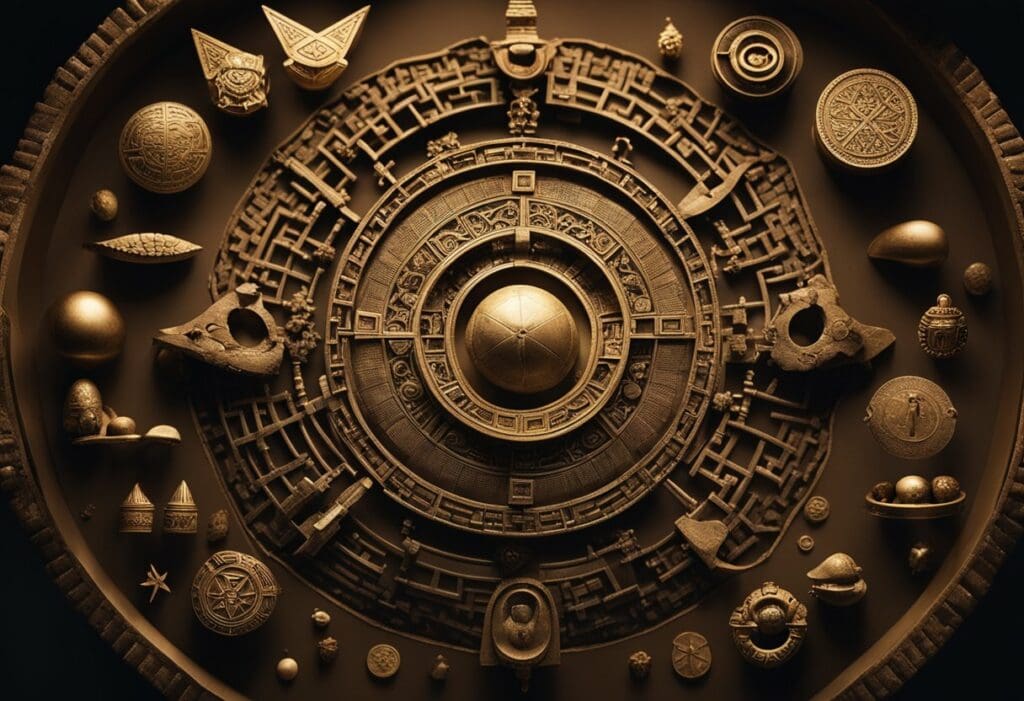
In our investigation into prehistoric art, we’ve observed the persistent human drive to communicate and express. Our research into these ancient enigmas reveals a consistent quest for expression through symbols, which speaks volumes about our ancestors’ cognitive capabilities and wisdom.
The geometric shapes, lines, and patterns discovered in caves around the world are more than mere decorations; they are a form of language, an early attempt at communication. As we decipher these symbols, we’re not just unlocking the mysteries of our past; we’re also gaining insights into the very foundations of language and symbolic thinking.
Our understanding of the well-being of ancient communities is linked to their use of symbols. These served not only as a means of recording information but also as a vehicle for sharing experiences and wisdom. The ability to convey complex ideas through simple signs was, undoubtedly, a significant advancement for humanity.
Through dedicated study and interpretation, we inch closer to comprehending the full extent of these symbols’ meanings. The art of the Ice Age, one of humanity’s earliest known forms of visual communication, illuminates a profound chapter in the story of our species — a tale of intellect and emotion etched on the walls of time.
Frequently Asked Questions
In this section, we address some of the most common queries about how the world’s oldest symbols are interpreted, their impact on modern understanding, and the techniques used to uncover their meanings.
What are the interpretations of the world’s oldest symbols discovered in archaeological studies?
The earliest symbols, often found in cave paintings or as carvings on artefacts, are believed to represent a myriad of concepts ranging from early human communication to symbolic representations of the natural world. Interpretations suggest they played key roles in storytelling and ritual practices.
How do ancient symbols influence our understanding of early human communication and culture?
Ancient symbols give us invaluable insights into prehistoric life, indicating that early humans had not only the ability to create complex thoughts but also to convey them meaningfully. They reveal aspects of early cultural beliefs and social structures.
Which civilisation is credited with creating the earliest known symbol?
The earliest known symbols have been attributed to the Neanderthals or Homo sapiens of the Ice Age, with prominent archaeological findings in places like Chauvet Cave in France.
What methodologies are employed in deciphering the meanings behind the world’s oldest symbols?
Scholars utilise interdisciplinary approaches, combining archaeology, anthropology, linguistics, and even digital technology to decipher these ancient symbols. Contextual analysis is crucial, considering the symbols’ locations, associated artefacts, and dating techniques to hypothesise their significance.
Can you trace the evolution of writing systems back to these ancient symbols?
Yes, the evolution of writing systems can be traced back to these primordial figures that laid the groundwork for abstract thought and symbolic representation. The transition from proto-writing to systematic writing is evident in ancient civilisations like Sumer and Egypt.
In what ways have the world’s oldest symbols informed current religious iconography?
Many of the world’s ancient symbols, such as the cross, the swastika, and the crescent, have been adapted or maintained their significance within modern religious iconography. These symbols often retain their original connotations of power and spirituality.






